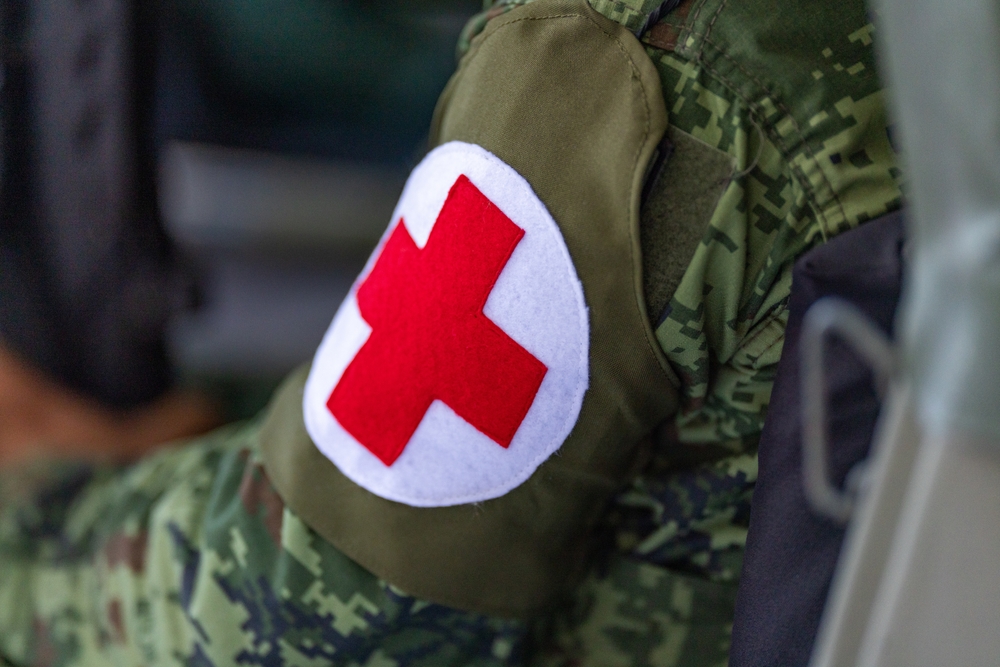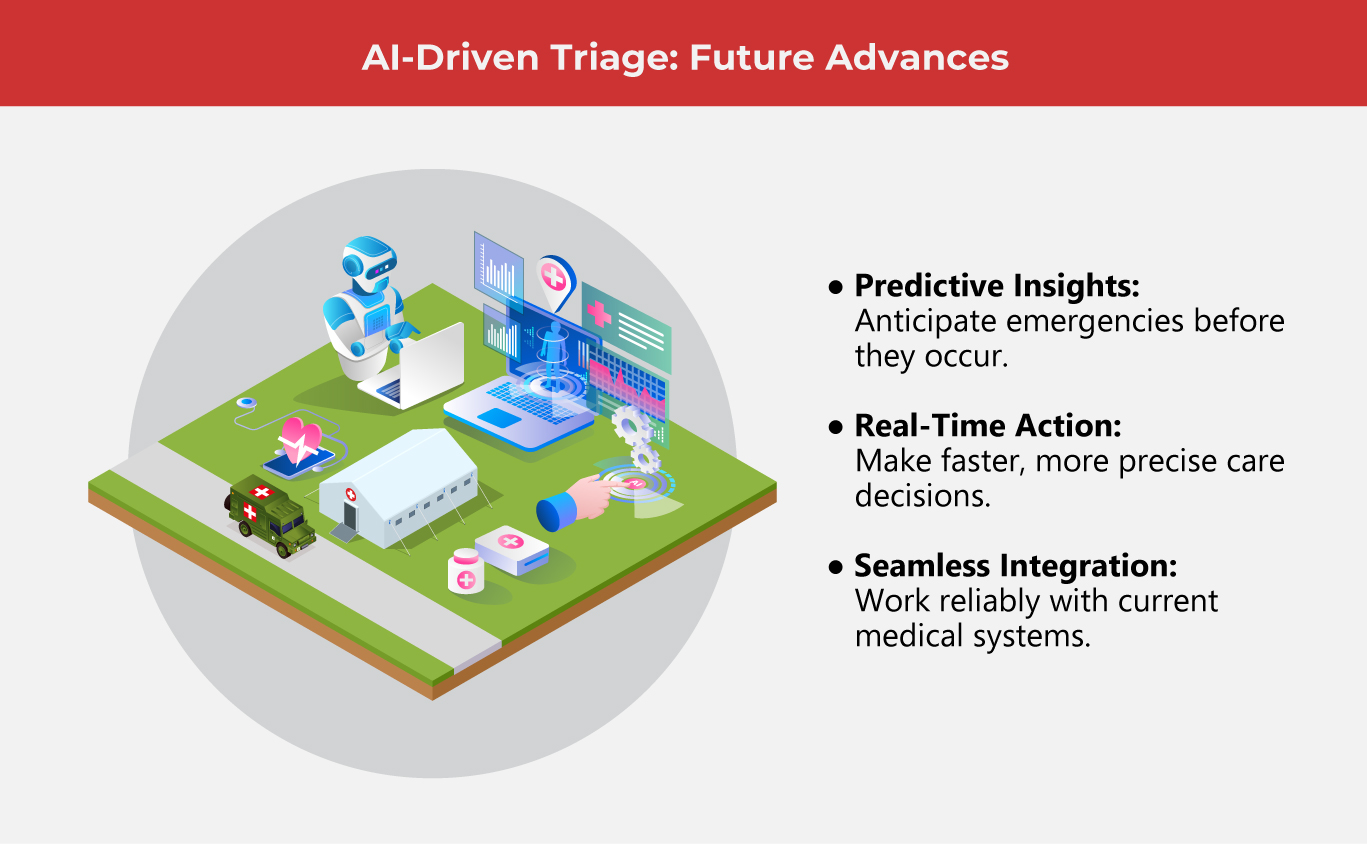Top 8 Advancements That Boost Battlefield Healthcare

Frontline medics face extreme danger, with around 86% of combat fatalities occurring within the first 30 minutes after injury. This urgency is pushing researchers worldwide to develop medical technology and advanced electronics, including artificial intelligence (AI), to improve combat healthcare and save lives under fire.
AI is being explored as a way to improve operational efficiency in military healthcare, particularly during large-scale combat operations (LSCO) where traditional systems may be overwhelmed. Studies warn of casualty levels unseen since World War II, underscoring the urgency for faster evacuation, better treatment capacity, and rapid recovery of injured soldiers to sustain combat readiness.
The release of ChatGPT in 2022 marked a turning point, allowing AI to reshape social and cultural dynamics. Beyond civilian applications, this technology is increasingly seen as a tool to make military operations future-ready. By leveraging AI for advanced analysis, leaders can enhance decision-making, sharpen situational awareness, and optimize resource management, processing massive amounts of data to identify trends and patterns that exceed human capacity.
Preparing for the Future Battlefield
The US Army Health System (AHS) faces increasingly complex challenges in the future operational environment. According to the Army University Press, AI offers transformative potential to help the AHS meet these challenges, particularly in test and system development, guided by three interwoven operational imperatives:
- Clearing the battlefield of casualties
Rapid evacuation and treatment of wounded soldiers is essential to maintain mobility and allow combat forces to operate unencumbered. AI can support real-time casualty tracking, incorporate visual inspection of injuries, optimize evacuation routes, and prioritize care.
- Soldier recovery
From home stations to forward deployments, the AHS focuses on force health protection (FHP) and health service support (HSS) to reduce complications from disease, injury, and infection. AI tools can improve readiness assessments and treatment planning, ensuring service members recover and return to duty as efficiently as possible.
- Overcoming contested logistics
Anticipated logistical constraints in forward areas require agile and flexible management of medical supplies, especially during mass casualty events. AI-enabled analysis, combined with reliability testing and predictive logistics, can help allocate resources effectively, mitigating risks to operational effectiveness.
(Also read: The Role of AI in Foreign Policy: Strengths & Setbacks)
8 AI-based breakthroughs transforming battlefield healthcare
Recent breakthroughs in system development are reshaping battlefield healthcare, offering new tools and strategies to enhance soldier survival and operational effectiveness.
- Data edge
By rapidly analyzing vast streams of visual and sensor data, thanks to camera vision technology, AI enhances situational awareness, accelerates decision-making, and reduces human error. Integrated with advanced algorithms, these tools allow military leaders to sense, interpret, and act faster, improving medical response on the front lines.
- Bridging personnel gaps
Military healthcare faces persistent labor pressures on and off the battlefield. Advanced testing solutions and AI help extend medics’ reach and reduce repetitive tasks, and accelerate decision-making. By supporting human expertise, these innovations address manpower shortages and ensure wounded soldiers receive timely, precise care.
- Health monitoring & disease management
AI strengthens military health by extending reach, enabling early detection of health risks, monitoring biometric and behavioral trends, and improving preventive programs. Soldiers benefit from timely interventions, personalized guidance, and greater readiness, while medical teams manage populations more effectively and efficiently.
- Surgical robotics in combat environments
Remote surgical systems are in active product development, creating semiautonomous platforms that allow skilled personnel to perform surgery in locations lacking medical resources. While a human doctor still supervises procedures, these systems extend lifesaving care to soldiers in combat zones and isolated areas.
- Unmanned ground vehicles (UGVs)
Innovative design and engineering drive UGVs and robotic platforms to expand battlefield support. They rescue the injured, handle dangerous tasks like bomb disposal, or act as armed units. Quadruped and biped systems reach inaccessible areas, operating autonomously or remotely, keeping soldiers safe.
- Predictive healthcare
Like advances in civilian healthcare, AI offers new ways to enhance care through testing and predictive modeling. From point-of-injury triage to bedside treatment, these tools help providers make faster decisions and optimize patient management while adapting to resource-limited battlefield conditions.
- Virtual reality (VR) training
VR training enhances battlefield healthcare by immersing medics in realistic, repeatable scenarios. Platforms like SimX’s VALOR system, developed with U.S. Air Force funding, enable realistic trauma simulations for sharpened decision-making and skill retention. These tools prepare medical teams for high-stress environments, enhancing readiness and effectiveness.
- Supply chain management
Delivering medical supplies on the battlefield is fraught with obstacles—from contested airspace to rough terrain. Integrating AI and machine learning into logistics transforms supply chains, enabling predictive planning, real-time monitoring, and optimized inventory. By streamlining resupply, these technologies improve efficiency and support timely care.
(Also read: Why You Should Invest in Machine Vision)
AI challenges in soldier health
AI offers exciting potential for battlefield healthcare, but implementing it effectively comes with significant challenges.
- Limited communications
On the battlefield, communications can be disrupted or slow, with limited bandwidth. Critical health data may be delayed as operational priorities take precedence, making it harder for medics to coordinate care.
- Unavailable data
AI depends on vast training datasets to identify patterns, but sufficient health data from large-scale combat and multidomain operations is lacking. Additionally, current systems may struggle to process high volumes of medical information.
- Training gaps
AI is not yet standard across military medical training or clinical settings. Healthcare teams need realistic exercises, updated curricula, and consistent exposure to effectively adopt AI across operational medicine.
- Updated data security
Even with AI-enhanced care, logistics, and evacuation, strict safeguards are essential to protect sensitive medical information, prevent bias, and avoid exposing troop locations or high-value personnel.
- Regulatory integration
AI in military healthcare must meet strict regulatory and governance standards while staying operationally relevant. Its development and deployment require seamless integration into army operations, ensuring effectiveness in high-pressure medical environments.
- Building tech expertise
Although the need for technical specialists is acknowledged, dedicated teams remain limited. Expanding AI’s benefits across military medicine requires sustained investment in skilled personnel and a comprehensive data strategy.
Transforming military healthcare
AI is reshaping military medicine, driving innovations that improve care, speed decision-making, and extend reach across the battlefield.
Advanced data analytics enable rapid, precise medical assessments, while integration with robotics allows autonomous procedures in hazardous environments. AI-powered telemedicine platforms further expand access, connecting soldiers with expert care wherever they are. Together, these trends enhance operational readiness, optimize resource allocation, and support lifesaving interventions under extreme conditions.
As AI continues to evolve, its role in military healthcare will grow, offering unprecedented opportunities to improve survival, efficiency, and resilience for service members in both garrison and deployed settings.
As one of the Top 20 EMS companies in the world, IMI has over 40 years of experience in providing electronics manufacturing and technology solutions.
We are ready to support your business on a global scale.
Our proven technical expertise, worldwide reach, and vast experience in high-growth and emerging markets make us the ideal global manufacturing solutions partner.
Let's work together to build our future today.




